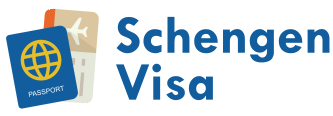The European Commission has published a report on migration and asylum in the EU, as well as announced several new/continuing initiatives in Europe, according to a press release published by the Commission.
According to the press release, the Commission will be adopting a renewed EU action plan against migrant smuggling. Included in the action plan is a renewed Employers Sanction Directive, which is meant to punish employers that bring migrants illegally to the EU for cheap, illegal labor.
The renewed action plan is meant to “prevent organized exploitation of migrants” and reduce irregular or illegal migration into the EU as well as promote “sustainable and orderly management of migration.”
Another goal of the renewed action plan is to combat organized crime centered around illegal migration and state-sponsored illegal migration. This is geared specifically towards Belarus, as Belarus has allowed and encouraged migrants to enter the EU illegally to create a crisis at the EU’s external borders.
According to the press release, the Commission will work together with the Council to achieve several goals between 2021 and 2025.
First, they will work to create anti-smuggling partnerships with several parties to build trust and cooperation, in a way that is mutually beneficial.
Second, they will further develop the tools necessary to combat illegal migration and migrant smuggling by means of the legal, diplomatic, and financial tools that are at the EU’s disposal. In the case of state actors such as Belarus, other measures will be taken, such as visas, trade, development, or financial assistance.
Third, they will work to improve the execution of the legal framework set up to punish and deter migrant smugglers.
Fourth, they will improve the legal framework that is meant to protect migrants from exploitation.
Fifth, they will respond to the constantly changing online tools and practices that are used to facilitate migrant smuggling.
Finally, they will increase the capacity for research and data collection to better analyze migration trends, the nature of criminal organizations, and the impact of anti-smuggling laws.
Last year, in 2020, the Commission proposed that there be a new pact for migration and asylum to keep up with evolving situations.
In 2021, Europe has faced many migration crises, including at external borders with Belarus and Turkey, the deteriorating situation in Afghanistan, and other ongoing crises worldwide.
“Last week marked one year since we put our proposals on the table for a New Pact on Migration and Asylum. Whilst progress on their adoption has been painfully slow, at the same time, migratory challenges have continued to arise in forms new and old. From continued pressure in the Central Mediterranean, to a deteriorating situation in Afghanistan and new pressure on our Eastern borders, all of these developments show the imperative need for a sustainable European asylum and migration framework. The Pact proposals, if adopted, could greatly improve Member States’ ability to deal with a whole range of issues currently faced. And if we have learnt anything in recent years, it should be that flying solo on these issues is not an option. Now is the time to come together around solutions,” said Margaritis Schinas, Vice President for Promoting our European Way of Life.











